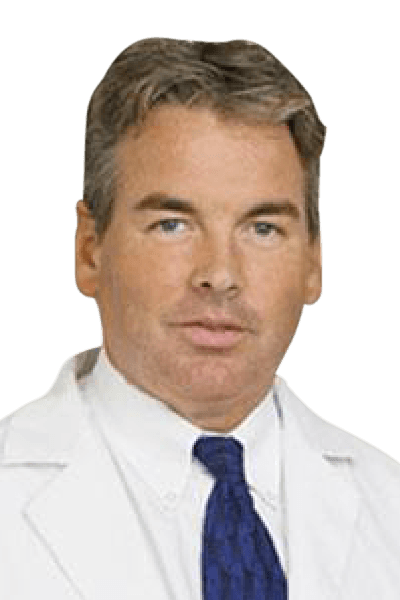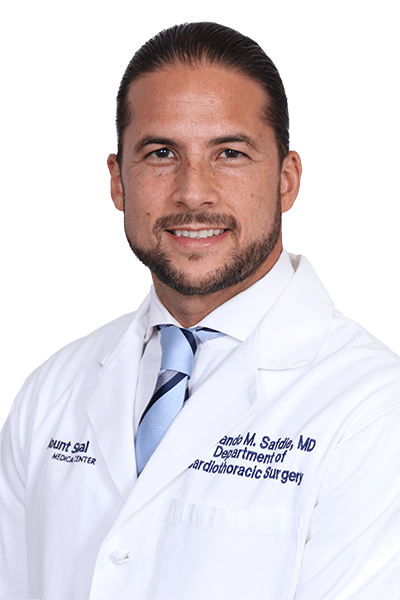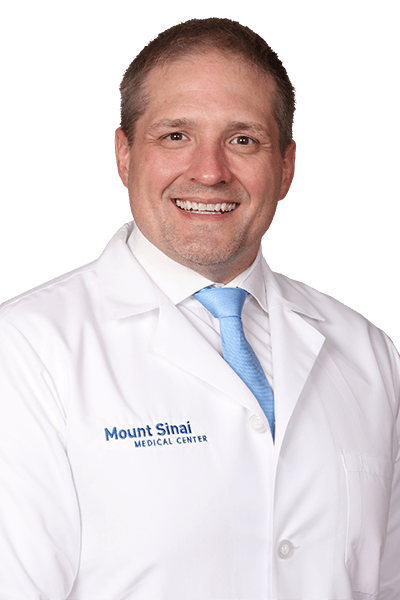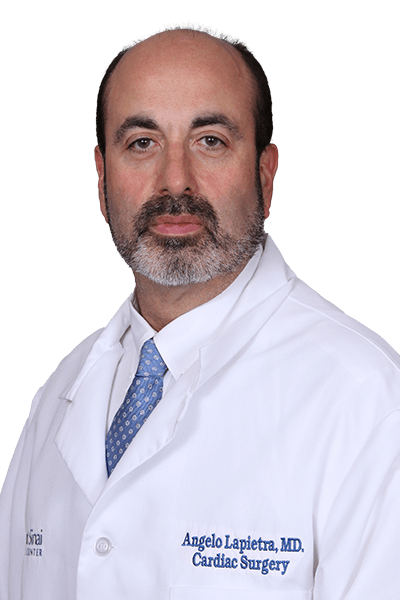Other Thoracic Surgeries
Other Thoracic Surgeries
Other Thoracic Surgeries
Other Thoracic Surgeries
Other Thoracic Surgeries
Other Thoracic Surgeries
The thoracic surgeons at Mount Sinai Medical Center also operate on patients with other unique conditions of the chest.
Conditions We Treat
The thoracic outlet is made up of the space between your collarbone and your first rib. Thoracic outlet syndrome describes a variety of disorders where the blood vessels and nerves in the thoracic cavity become compressed. At Mount Sinai, the thoracic surgery team can perform a robotic-assisted first rib resection to relieve the compression on the cavity itself.
A diaphragmatic hernia occurs when abdominal organs enter the chest through an opening in the diaphragm. It’s rare in adults and more common in infants. Regardless of age, a diaphragmatic hernia is a medical emergency and requires surgery by a trained thoracic surgeon who will return the organs to their proper location and repair the diaphragm. Our thoracic surgeons are experts at repairing these hernias by utilizing the robotic-assisted platform, which provides an accelerated recovery to our patients.
A hiatal hernia occurs when there is an opening in the diaphragm that permits the upper portion of the stomach to enter the chest area. Mount Sinai’s thoracic surgery team can repair hiatal hernias. Our thoracic surgeons are experts at repairing these by utilizing the robotic-assisted platform. Together, Dr. Safdie and Dr. Williams have performed one of the largest robotic-assisted repair series for giant paraesophageal hernias in history.
This is a rare condition often seen after cardiac bypass surgery, trauma, neck surgery, or after a viral infection. These patients may show symptoms like shortness of breath during physical exertion, while laying down flat, or while bending over or going to the bathroom. These patients may benefit from and be candidates for a robotic-assisted diaphragmatic plication. During this operation, the diaphragm is brought back to its proper position, allowing the lung to re-expand, so patients can breathe easier and get enough oxygen.
.
This occurs when the breastbone is sunken into the chest. The condition ranges in severity. This anatomical defect rarely causes any issues; however, severe cases can affect heart and lung function. In these cases, patients typically undergo surgery immediately after diagnosis to restore healthy breathing or cardiac function. Mount Sinai’s thoracic surgeons repair the chest deformity by raising the recessed area of the chest to a normal level.
Other Thoracic Surgeries
Our Physicians
Roy F Williams, MD
Chief, Divison of Thoracic Surgery
- Cardiology
- Robotic Surgery
- Thoracic & Cardiovascular Surgery
- Lung Cancer
- Mount Sinai Medical Center (Main Campus)
- 305.674.2121
Fernando Safdie, MD
Director of Endoluminal and Airway Surgery
Associate Director of Thoracic Surgery
Division of Cardiothoracic Surgery
- Robotic Surgery
- Thoracic & Cardiovascular Surgery
- Lung Cancer
- Mount Sinai Medical Center (Main Campus)
- 305.674.2121
Steven R DeBeer, MD
Co-Director, Aortic Center
- Cardiac Surgery
- Robotic Surgery
- Thoracic & Cardiovascular Surgery
- Aortic Aneurysm Repair
- Mount Sinai Medical Center (Main Campus)
- 305.674.2121
Angelo La Pietra, MD
Director, Surgical Electrophysiology
- Cardiac Surgery
- Cardiology
- Thoracic & Cardiovascular Surgery
- Robotic Surgery
- Mount Sinai Medical Center (Main Campus)
- 305.674.2121





